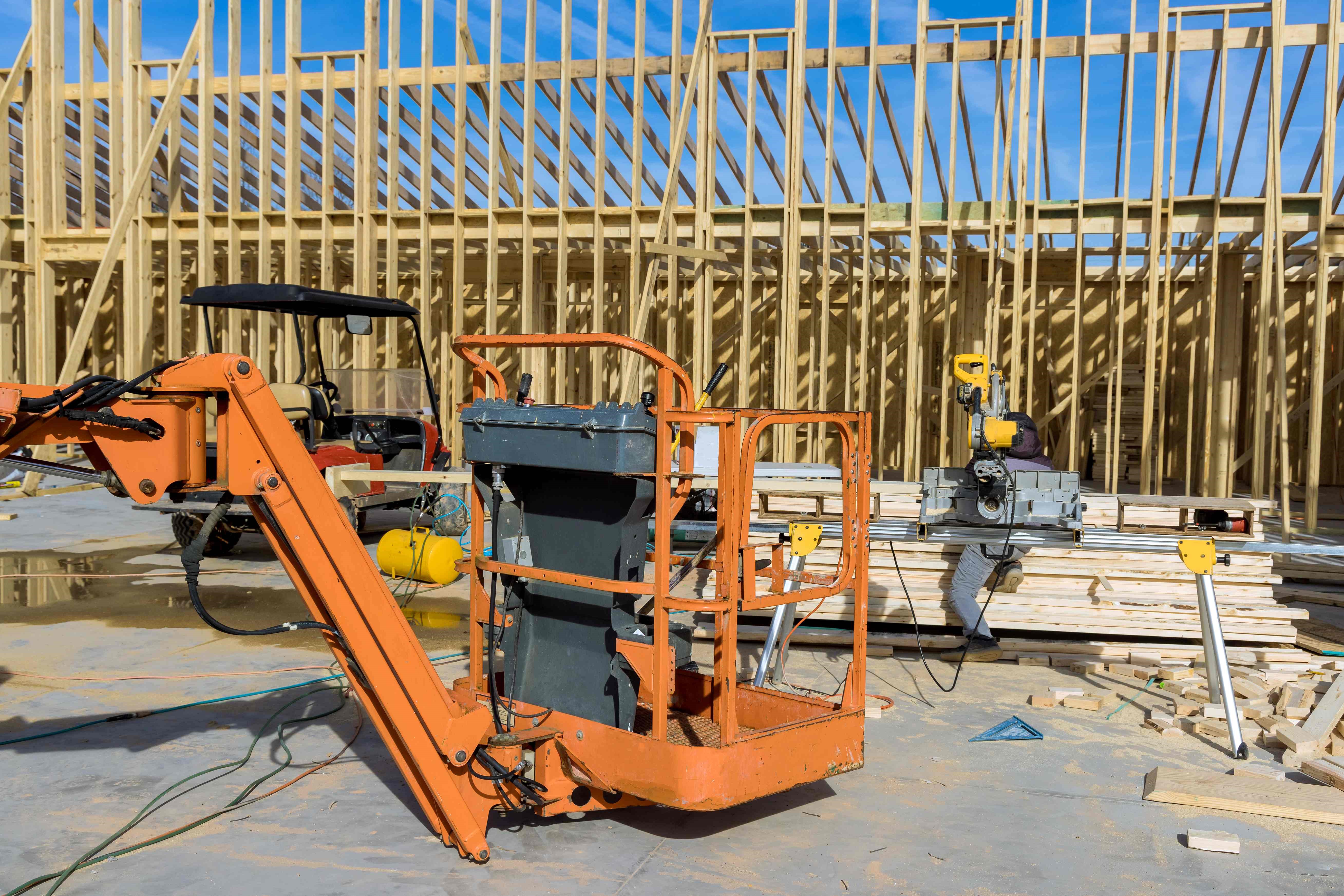
The Homeowner's Guide to Safely Using a Scissor Lift
July 1, 2025
Scissor lifts can be a game-changer for tackling home improvement projects that require working at height, whether it's painting vaulted ceilings, cleaning out gutters, or trimming trees. But even though they’re easy to rent and fairly intuitive to use, they still come with some risks, especially if you’ve never operated one before.
This guide is designed to walk you through everything a homeowner needs to know to use a scissor lift safely and confidently, without needing a professional background. We’ll explain how these machines work, when to use them, what accidents to watch out for, and how to stay safe with easy-to-follow, DIY-friendly best practices.
What Is a Scissor Lift?
Think of a scissor lift as your own mobile work platform. It’s a powered lift that moves you and your tools straight up and down using a folding support structure that looks like a scissor mechanism. It’s more stable than a ladder and less hassle than setting up scaffolding.
Most scissor lifts roll on wheels, and depending on the model, they run on electricity or gas. They come with built-in guardrails and are designed for one or two people plus tools. You drive it into place, raise yourself to the right height, get the job done, then lower it back down.
Common Ways Homeowners Use Scissor Lifts
-
Painting high walls or exterior siding
-
Cleaning or repairing gutters
-
Installing outdoor lights or security cameras
-
Washing second-story windows
-
Trimming trees or hedges on flat ground
For indoor jobs, go with an electric scissor lift. For outdoor work or uneven terrain, rent a rough-terrain model with better tires and more stability.
Common Scissor Lift Accidents and How to Avoid Them
Accidents don’t just happen on construction sites. Every year, homeowners get injured from scissor lift misuse. The most common accidents include:
-
Tipping over from driving on sloped or uneven ground
-
Falling due to leaning too far or climbing on the guardrails
-
Getting shocked by accidentally coming too close to power lines
-
Getting pinned when the platform hits an overhead beam or structure
Luckily, all of these are preventable with the right approach. Here’s how to stay safe.
Practical Safety Tips for First-Time Users
-
Learn the Controls
Before doing anything, familiarize yourself with the controls and emergency shut-offs. Ask for a quick walkthrough from the rental shop or check the manual. -
Give It a Quick Inspection
Walk around the lift and look for signs of damage like leaks, cracked tires, loose guardrails, or frayed wires. If something doesn’t look right, don’t use it. -
Wear the Right Gear
Gloves, non-slip shoes, and a hard hat are smart additions. Don’t climb or stand on the guardrails, and never stack ladders or boxes on the platform. -
Use It on Flat, Firm Ground
Avoid hills, holes, soft dirt, or gravel. If the surface isn’t level, the lift isn’t safe. Use stabilizers or wood cribbing if needed. -
Check the Weather
Don’t use a scissor lift in wind over 28 mph, during rain, or when the ground is slick or icy. -
Stay Clear of Power Lines
Always keep at least 10 feet between the lift and any overhead wires. Electricity can arc, even without touching. -
Don’t Drive While Raised
Move the lift only when it’s fully lowered. Driving while elevated is one of the top causes of tip-overs. -
Stick to the Weight Limit
The platform has a max capacity. Don’t exceed it. That includes you, your tools, and any materials you’re hauling up. -
Mark Off the Area Below
Don’t let anyone walk or stand underneath while you’re working. Use cones or tape if you’re near driveways or sidewalks. -
Follow All Safety Labels
Every model has specific dos and don’ts. Don’t override alarms or ignore the warning stickers. They’re there for a reason.
Rent with Confidence from A-Z Rentals
If you're ready to take on your next home project with a scissor lift, A-Z Rentals has you covered. Whether you're cleaning gutters or painting those high-up trim lines, our rental catalog features a full selection of reliable scissor lifts suited for homeowner use. Still have questions? Contact us and our team will help you pick the right equipment for the job. Not sure which type of lift is best for your needs? Check out our blog on What Kind of Lift is Right for Your Home Project for helpful tips and guidance.